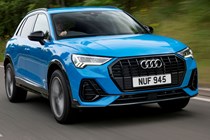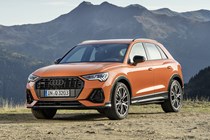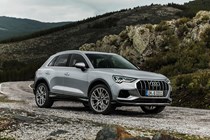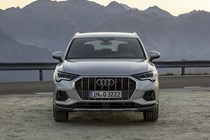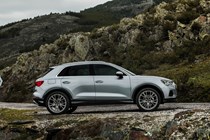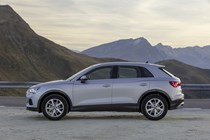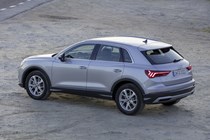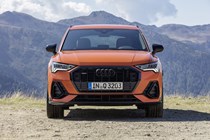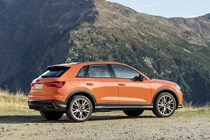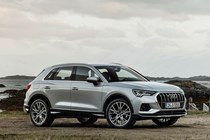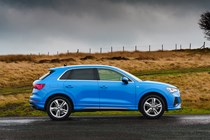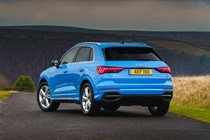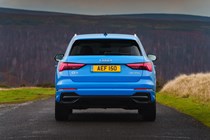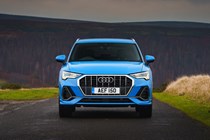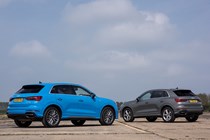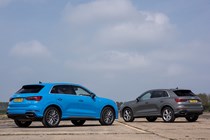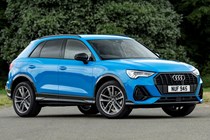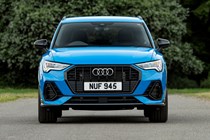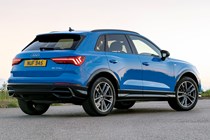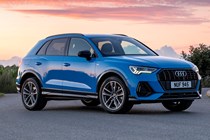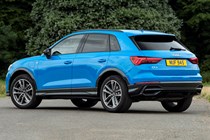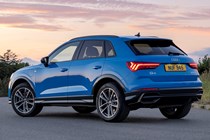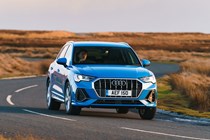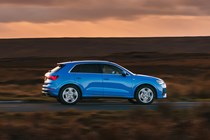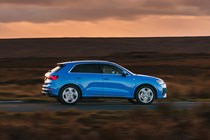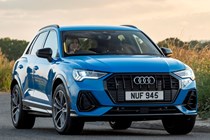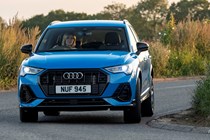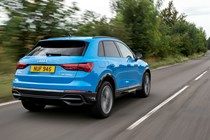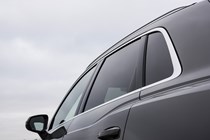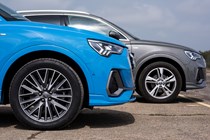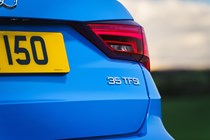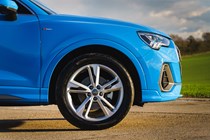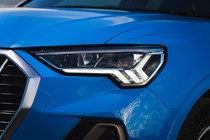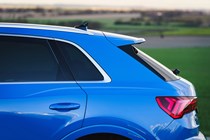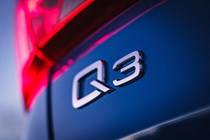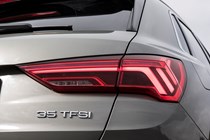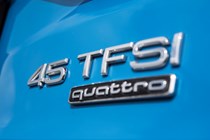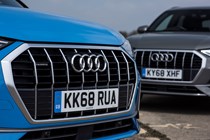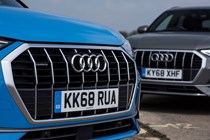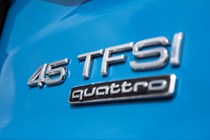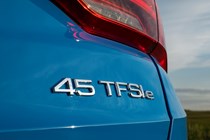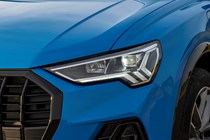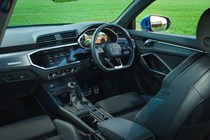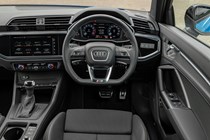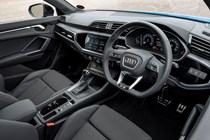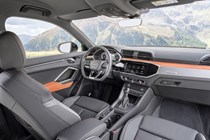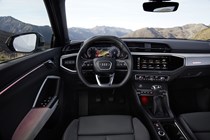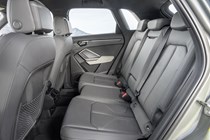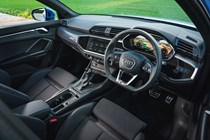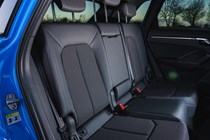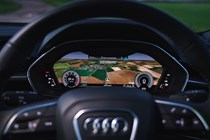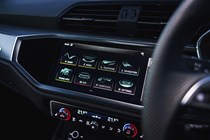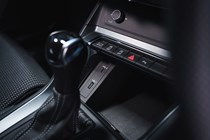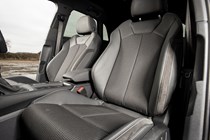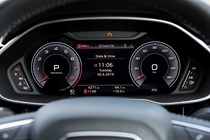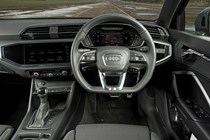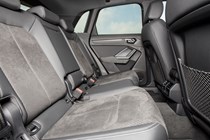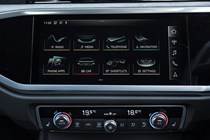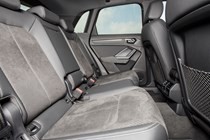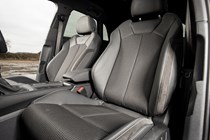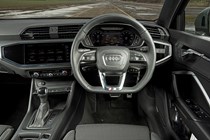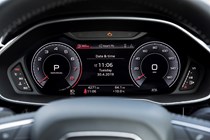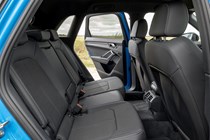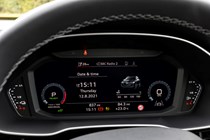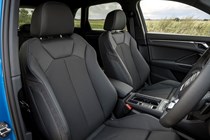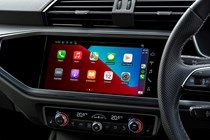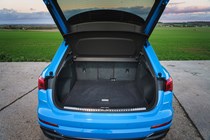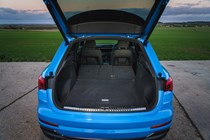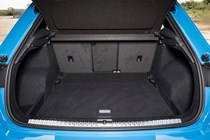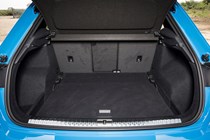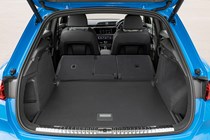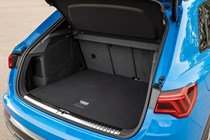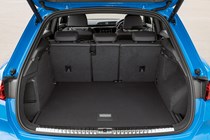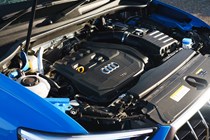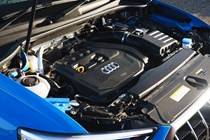Audi Q3 engines, drive and performance
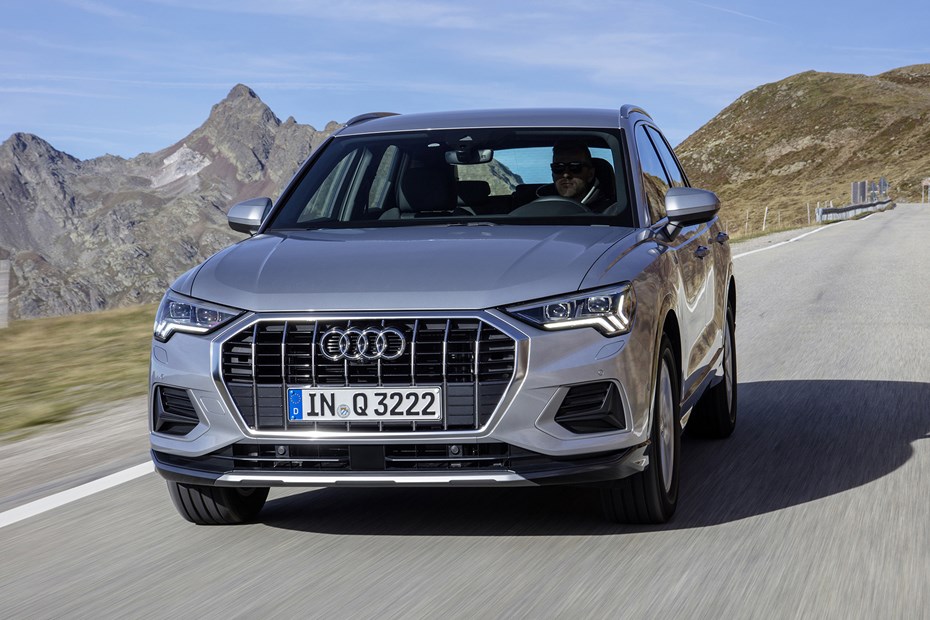
- Three petrol engines, two diesels and a plug-in hybrid
- Six-speed manual gearbox or seven-speed automatic available
- More powerful engines fitted with Quattro four-wheel drive
Petrol engines
All of Audi engines’ power outputs are signified by the badge on the bootlid. The easiest way of figuring it out is the larger the number, the more power it has. In the case of the petrol models, entry level is the 35 TFSI model, which has 150hp. Despite being at a moderate position in the range, this is an excellent option with a good combination of performance and economy – and a great option for those getting out of a diesel and into a petrol.
It’s quiet and smooth for the majority of the time, provided you don’t ask too much of it. Work it above 4,500rpm and it becomes quite vocal, with the engine shouting in protest as it struggles to haul the Q3 with any finesse. Drive less like a hooligan and you should find it potent enough to keep up with the flow of traffic.
Audi’s larger 2.0-litre engines add more performance at the expense of fuel economy, although it has to be said, they’re both still capable of more than 45mpg without too much difficulty. The 40 TFSI produces 190hp while the 45 TFSI develops 230hp – and that’s enough for some entertainment from the lights and plenty of motorway performance, even when fully loaded. Both engines feature Quattro four-wheel drive and automatic gearboxes.
Diesel engines
The entry-level 35 TDI diesel engine is less refined than its petrol counterpart but, thanks to more mid-range pulling power, it feels markedly quicker than the 1.5-litre petrol on a day-to-day basis. If you’re a long-distance driver or tow regularly, there’s still a case for choosing this model. Both entry-level 35 engines (petrol and diesel) can be had with either a six-speed manual or a seven-speed DSG automatic gearbox.
The 40 TDI diesel produces 190hp. It’s your top option here and is a genuinely rapid car in real-world driving. This model is available as an automatic only, but that’s no hardship given the excellence of Audi’s seven-speed DSG set-up. How well it performs is a bit of a mixed bag: gear changes are smooth and quick on the move, but the dulled response when stationary means you’ll have to forgo any gaps at junctions or in low-speed traffic. .
Hybrid engine
The plug-in hybrid (PHEV) TFSIe is powered by the same 1.4-litre petrol engine and electric motor that you’ll find in VW Group plug-in models such as the Volkswagen Golf and Passat as well as the Skoda Octavia and Superb. So it’s a known quantity. In the Q3, it’s good for a hot hatch-like 245hp and that means interesting levels of acceleration from the off. You can light up the tyres easily when trying to emerge from a T-junction, for instance.
It’a unobtrusive in use, running in electric mode for a claimed 31 miles (we never never saw more than 23 in testing) and switching seamlessly between battery and petrol engine. Once the charge has depleted, it does feel a lot less lively and somewhat less refined, but careful battery management will see you running in hybrid mode effectively over surprisingly long distances.
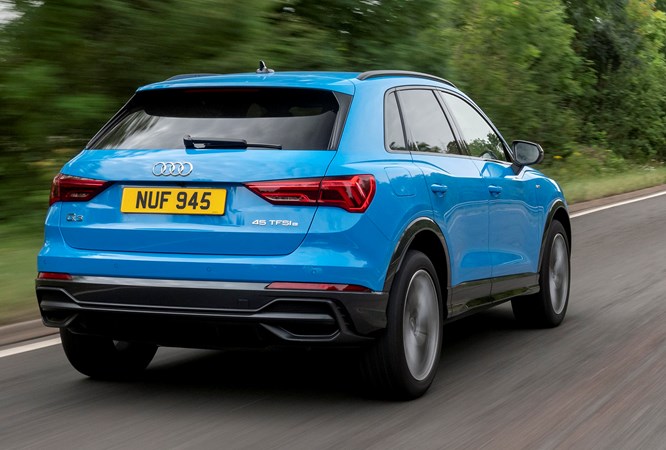
What’s it like to drive?
- Firmer S line suspension reduces body roll
- Good grip levels but hardly agile
- Choice of drive modes available
The Audi Q3 is a relaxed place to spend time in so it comes as no surprise that it’s not the most involving driving experience on the road. In the grand scheme of the premium SUV world, the Q3 is neither here nor there, with most of the controls like the steering, pedals and gearshifts being light, easy and accurate – perfect for urban and suburban driving. But it’s not as entertaining as a Range Rover Evoque or BMW X1/X2.
The steering is light and there’s little indication of grip levels, but this is expected in an SUV. The standard-fit progressive steering amplifies the turning angle of the wheels as you apply more steering lock, so it’s not too slow to react when navigating through sharper corners.
There’s little road noise or vibration at motorway speeds, with just a hint of wind noise generated by the large door mirrors. The petrol engines are more refined than the diesels in general, provided you refrain from driving them in an aggressive manner. The 1.5-litre in the 35 TFSI can be a noisy companion for those up front as it emits a drone into the cabin.
The ride is firmer on S Line models thanks to sport suspension and larger 19-inch wheels but it never sends thumps into the cabin or become uncomfortable. The entry-level Sport model with standard suspension and smaller 18-inch wheels may be the most cosseting of the bunch.


